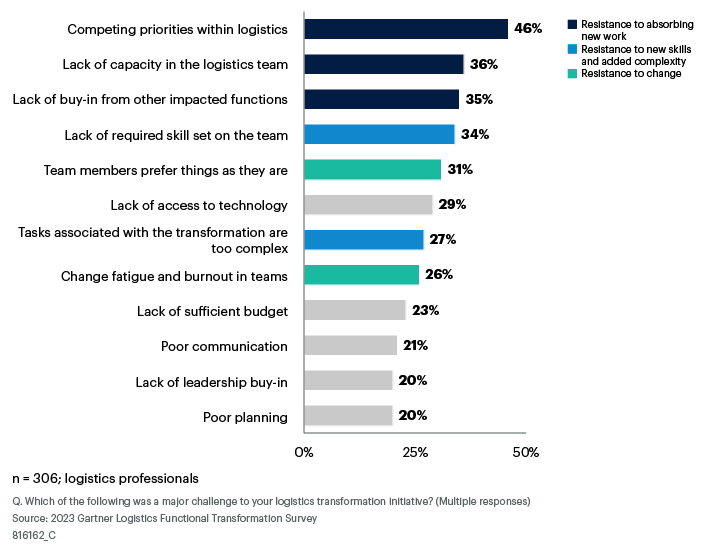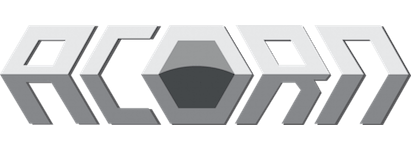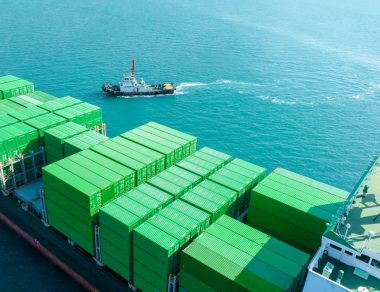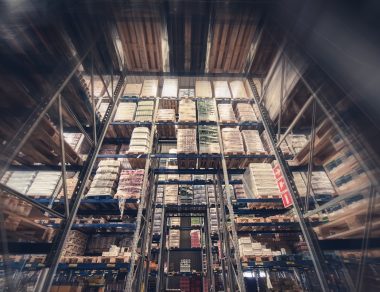
Imagine your supply chain as a way to transform your business competitiveness, not simply as a cost centre that needs to be made more efficient. 81% of companies agree that supply chain transformation is critical to their business success.
With the current challenges of market turbulence, geopolitical instability and cost pressures, it is easy for OEMs to default to just weathering the storm. To view the company supply chain as being simply a cost centre to make more efficient. But smart manufacturers influenced by the latest supply chain management thinking are turning these challenges into opportunities.
How? By flipping the view on supply chain to be a competitive differentiator for manufacturers. Post-pandemic, the need for agile, resilient supply chains that provide a key edge on the competition has come into sharp focus. Stellantis, the giant car manufacturer — responsible for marques such as Citroen, Chrysler, Alfa Romeo and Vauxhall — has recently stated it will "strive to source 80% of its supply from low-cost countries by 2028" in a move to reduce significantly overall expenses. To do so it will need to radically transform its supply chain and supplier network and relationships, and to constantly optimise it dynamically.
The same thing is happening across other manufacturing industries. It is a philosophical and strategic shift changing the landscape of OEM supply chain.
Organisations with optimal supply chain networks have 15% lower supply chain costs, less than 50% inventory holdings, and at least three times faster cash-to-cash cycles when compared with businesses without optimised networks.
— Logistics Bureau
Moving from Cost Cutting to Asset Building
Optimising operations and a company's supply chain capability represents a critical success factor for any manufacturer. Traditionally, in supply chain management, the supplier network and supply chain has been viewed as a cost centre to be minimised, with investment driven by the market and economic conditions of the day. Viewing it this way minimises the upside of supply chain improvement through the limited lens of operational efficiencies and expense reduction only. This narrow approach misses the massive upside to wider strategic impact of supply chain transformation (and the potential value add of the right logistics services and partner).
Resistance in major logistics transformation challenges

It is not only a mindset shift. Logistics transformations are difficult, with 66% of these projects never fully succeeding. Dealing with internal capability, team capacity and resistance are crucial (according to Gartner research). A shortcut to this, as already mentioned, is the master supplier approach and leveraging a trusted logistics service partner. This is a much more valuable option for specialist OEMs who lack the capability and capacity of larger enterprises and conglomerates. More on this later.
Forward-thinking OEMs need to embrace this new philosophy either through internally building capacity and skills for it, or through partner collaboration. The reward? A shift to an optimally designed supply network that can drive business success far beyond a narrowing plane of cost efficiencies. Innovative use of supply chain technologies backed up by skilled logistics and warehousing professionals turn inventory management and supply networks into strategic assets that propel competitiveness in the marketplace and turbocharge production line and assembly.
Moving to a capability-centric approach offers flexibility and responsiveness to market demand and unique customer needs (essential in the world of OEM high value product creation). Building agility through leveraging dynamic supply networks is crucial in today's manufacturing environment, and having the relationships and skills to manage these are essential. They need time to grow, nurture and be trusted. Factor in sustainability, risk management and ethical issues with vetting and traceability requirements, and the expertise and time needed to cultivate these assets is evident. The pay-offs? Better supplier quality and relationships, more agility and resilience to supply disruption, and the ability to capitalise on evolving market opportunities.
Key Drivers of Supply Chain Transformation
What is the impetus to address transformation? The increased customisation customers demand and flexibility in delivery (this, of particularly high relevancy for the OEM sector). The need (that both customer's demand and that are required by legal risks) for supply transparency and traceability. Addressing sustainability and the circular economy for mandatory compliance, ethical and competitive reasons. Geopolitical pressures, trade tensions and diverging global regulation call for more agility and oversight for rapid reconfiguration around bottlenecks. Technological advancements in hardware, warehousing solutions, and increased digitalisation throughout the supply chain, requires new thinking, working methods and utilisation to be competitive.
What insights are driving strategic supply chain transformation? Given current thinking we need to look at: supply chain as competitive differentiator more than a cost centre, the supply network not as one-shot optimal design but as a dynamic process of continually improving network design, and connected supply chain technologies and networked tools for data-driven improvements.
Adopting a capability-centric approach where the focus is on analysing and managing supply capabilities on a more granular level allows for a dynamic process of reconfiguration which is more responsive to end-user demands and market conditions.
To manage this dynamic process an OEM must have a procurement capability or master supplier that can leverage connected supply chain technologies and data for monitoring, tracking and data-driven decision making. They must have the inventory management and warehousing infrastructural capabilities to support this.
Companies must define the shape of transformation (or co-create this in collaboration with an experienced supply chain partner), to define what is optimal for their unique situation — what are the relative weights of operational risk compared to operational cost, agility versus reliability in inventory control, on-shoring vs off-shoring, carbon emissions, etc.
How do the demands of your company feed into sustainability, flexibility, quality and resilience which are the drivers of success in the new supply chain paradigm?

Next Generation Technologies to Transform OEM Supply Chain
The thoughtful implementation of the latest array of industrial and logistic tech is foundational in levelling up your supply chain logistics infrastructure.
IoT (Internet of Things) sensors, QR coding and RFID tags can support a capabiity-centric approach. Monitoring this performance, supply disruption and the reconfiguring of supply channels dynamically through advanced analytics gathered by these technologies can contribute to an agile and resilient response to changing real-world conditions.
AI and machine learning hold the promise of predictive analytics insights to manage inventory levels dynamically and assembly schedules in tune with client demand. They can optimise stock and offer the ability to identify supply chain risk earlier than manual approaches.
Blockchain technology offers a solution to supply transparency and traceability. Provenance and quality of supply can be assured through distributed ledger technology that tracks product and transactions across the entire supply chain network. It enhances trust and ESG compliance for OEMs who rely on many parts from different suppliers.
Digital twins create virtual replicas of physical assets and processes allowing manufacturers to simulate scenarios, optimise operations and make data-driven decisions to enhance network agility and responsiveness.
Warehouse automation and robotics can increase operational speed and efficiency for picking, packing, storage and order processing for assembly. It frees up human resource for higher value activity including quality control.
Finally, cloud based platforms, EDIs and APIs are necessary for interoperability between manufacturers and suppliers to be fit for purpose and function seamlessly in the coordination of effective network management and supply chain dynamism. Supply chain control towers are the operational end goal for these platforms, offering a holistic 'lighthouse' illumination of a manufacturer's end-to-end supply chain.
All these technologies have alluring aspects for the manufacturer, but beware of hype cycles and misplaced promise, over-engineering and implementation problems (as previously mentioned with the Deloitte study, and laid out in literature such as AI Snake Oil which looks at the smoke and mirrors of current AI proficiencies) — a phased approach or collaborating with expert partners can ease the path to modernisation and ground improvements in reality. Data governance and cybersecurity also need to be taken ever more seriously the more digitalised the supply chain. The threat of operational disruption and bad actors interfering with operations is a danger.
The Master Supply Partner Approach as Cheat Code
It is a big strategic undertaking to transform the supply chain. A master supply partner (MSP) can be a cheat code in gaining a central point of contact and management to expertly maintain, dynamically manage, and deliver supply chain services to an OEM. It streamlines operations, improves efficiency and enhances performance. It can offer a way to level up a huge tranche of operations and gain expertise and leverage through a collaborative partner to help in the transformation and planning process.
Improved supplier management
By offering a single point of contact focussed squarely on managing this area and inventory surrounding it a MSP can dynamically manage and leverage a supply network of multiple suppliers and trusted relationships within this.
Enhanced visibility
A trusted collaborative partner with focussed oversight of this area is focussed solely on supplier tracking, delivery, performance and supply chain activity optimisation leading to more informed decision making.
Increased efficiency
Centralised supplier management and expertise (including through working with other OEM clients) can reduce redundancies in supply, streamline processes and utilise experience for real-world application.
Risk mitigation
Identifying key risks, having a far-sighted holistic view of supply networks (over and above the specific client) allows the MSP to address disruption and systemic risks in the supply chain environment more effectively and pass these benefits on to the client.
A master supplier can work with an OEM for data-driven decision making. With access to a greater supply network than that focussed on one specific client, an MSP can identify optimal suppliers while also using vast datasets to optimise for an individual OEM needs (subject to confidential data fencing). AI-enabled algorithms can analyse supply data best performers and production capacity and delivery.
Effective collaboration and transparency including how best to utilise technologies and relationships involved in this, and to maximise supplier engagement should be second nature to a battle-hardened MSP. They will be experienced in the integrating of client and supplier technologies and systems.
Building resilience and agility in supply requires supplier diversification including strategies to reduce global disruptions (whether political, pandemic or climate based). Managing a geographic mix of near-shoring or re-shoring in the network may help, as will the active management of duplicate or alternate supply.
This holistic approach to master supply can do much heavy lifting in one's supply chain transformation. Recent research suggests robust data frameworks and governance, highly trained personnel and investment in logistical skills, along with sustainability practices and experience implementing AI-driven workflows and automation are significant contributors in the drive for transformative supply chain. Finding the right supply partner with these assets can take your supply chain from cost sink to strategic asset.
"The greatest danger in times of turbulence is not the turbulence itself, but to act with yesterday's logic."
— Peter Drucker
In this era of digitalisation and 4IR (the Fourth Industrial Revolution), this quote from management philosophy legend Peter Drucker resonates more than ever. Today's manufacturers must embrace innovative approaches to supply chain management, leveraging cutting-edge technologies, fostering collaborative partnerships, and optimisation of dynamic supply networks, to stay ahead of the curve.
Sources — How to Overcome Resistance to Logistics Transformation Initiatives, Gartner — AI Snake Oil: What Artificial Intelligence Can Do, What It Can’t, and How to Tell the Difference. Arvind Narayanan & Sayash Kapoor — From Challenge to Advantage: Supply network optimisation, Deloitte — Logistics Bureau Statistics
Learn about our planning services
Acorn work with OEMs as a trusted and experienced master supply partner.
We work with you to create an optimal, dynamic supply chain for your company.
Learn about the services and consultation we offer.










